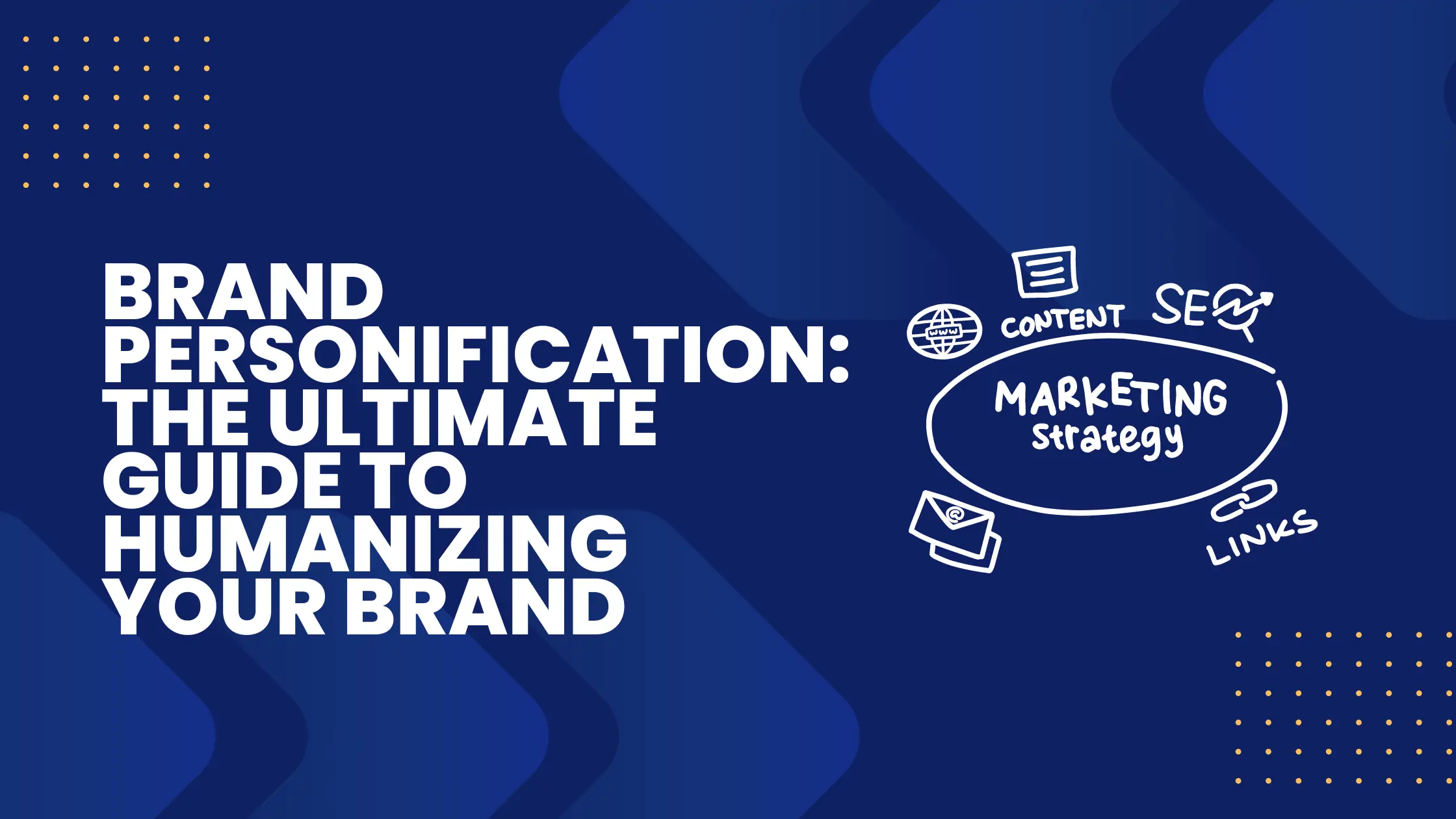In today’s digital landscape, brands need more than just a logo and a catchy slogan to stand out. Consumers are bombarded with countless options, making it crucial for businesses to forge deep, emotional connections with their audience. This is where brand personification comes into play. But what exactly is brand personification, and how can it transform your brand? Let’s dive into the concept and explore how you can harness its power to create an authentic and engaging brand presence.
What is Brand Personification?
Brand personification is the practice of giving your brand human characteristics, allowing it to resonate on a personal level with consumers. By imagining your brand as a person, you can define its personality, values, and voice, making it more relatable and memorable.
“What if your company were a person—someone you can sit down with, take out to lunch, and let babysit your kids? Would you like them as you would a best friend, or would you screen their calls?”
This approach makes your brand more than just a business; it becomes a character that consumers can relate to, trust, and even love.
Why is Brand Personification Important?
1. Emotional Connection
Emotions drive purchasing decisions. By personifying your brand, you tap into the emotional psyche of your consumers, making your brand more approachable and trustworthy. When consumers see a reflection of themselves in your brand, they’re more likely to feel connected and loyal.
2. Differentiation
In a crowded marketplace, brand personification helps you stand out. A well-defined brand personality differentiates you from competitors and makes your brand more recognizable. This uniqueness can be the deciding factor for consumers choosing between similar products or services.
3. Enhanced Engagement
Marc Lamoureux from Veriday emphasizes that “66% of all customers want human interaction in their experiences.” A brand that feels human invites engagement, conversation, and community. Consumers are more likely to interact with a brand that they perceive as having a personality similar to their own.
Key Elements of Brand Personification
1. Brand Personality
Defining your brand’s personality is the first step in personification. Ask yourself questions like: If my brand were a person, what kind of person would they be? Would they be serious or playful, authoritative or nurturing? This personality will guide all your brand’s communication and interactions.
2. Storytelling
A compelling story is at the heart of brand personification. The story of how your brand came to be, its challenges, victories, and values, all contribute to the personality of your brand. Storytelling helps to humanize your brand, making it relatable and engaging.
3. Visual Identity
Your brand’s visual elements should reflect its personality. Colors, fonts, and logos should align with the traits you’ve assigned to your brand. For example, a bold, adventurous brand might use vibrant colors and dynamic typography, while a trustworthy, professional brand might opt for muted tones and classic fonts.
4. Voice and Tone
How your brand speaks is just as important as what it says. Your brand’s voice should be consistent across all platforms, whether it’s a social media post, a customer service interaction, or an advertisement. A brand with a friendly, conversational tone will come across as approachable and warm, while a more formal tone might convey professionalism and authority.
Real-Life Examples of Brand Personification
1. Allstate: Dennis Haysbert
Dennis Haysbert’s role as the spokesperson for Allstate is a prime example of brand personification. His deep, soothing voice and trustworthy appearance have become synonymous with the brand, instilling confidence and reliability in Allstate’s services.
2. Progressive: “Flo”
Flo, played by Stephanie Courtney, has become the face of Progressive Insurance. Her quirky personality and energetic demeanor have made Progressive not just another insurance company but a memorable and approachable brand.
3. Coca-Cola
Coca-Cola has taken brand personification to the next level with its “Share a Coke” campaign. By printing names on bottles, Coca-Cola created a personal connection with consumers, making the brand feel like a friend sharing a moment.
4. M&M’s
The animated M&M’s characters have become icons in their own right, each with a distinct personality. This personification has made the brand more relatable and engaging, appealing to both children and adults.
5. UBA’s Leo
United Bank for Africa’s AI personality, Leo, serves as both a mascot and a virtual assistant, embodying the bank’s brand personality. This innovative approach to brand personification demonstrates how technology and brand identity can be seamlessly integrated.
Challenges of Brand Personification
While brand personification offers many benefits, it also comes with challenges. In highly regulated industries like finance, brands must navigate strict compliance rules while maintaining a personable image. Additionally, humanized brands are often held to higher standards. When something goes wrong, consumers might perceive the mistake as intentional, leading to greater backlash.
Steps to Personify Your Brand
Step 1: Explore Your Brand’s Personality
Begin by brainstorming with your team. Discuss what kind of person your brand would be if it were human. Is it a mentor, a friend, or a rebel? Write down characteristics and adjectives that describe your brand.
Step 2: Craft a Compelling Brand Story
Every brand has a story. Document yours in a way that highlights the human qualities of your brand. What inspired its creation? What values does it stand for? How has it evolved over time? A well-told story can make your brand feel like a living, breathing entity.
Step 3: Define Your Visual and Verbal Identity
Ensure that your brand’s visual elements and tone of voice reflect its personality. Consistency is key—your brand should be instantly recognizable whether through its logo, color scheme, or the way it communicates.
Step 4: Engage with Your Audience
Brand personification is not a one-way street. Engage with your audience on social media, respond to comments, and take part in conversations that matter to them. This will reinforce the human qualities of your brand and build a loyal community around it.
The Future of Brand Personification
As technology evolves, so too does the potential for brand personification. The rise of chatbots, virtual assistants, and even AI-driven personalities like UBA’s Leo represents the future of brand interaction. These digital embodiments of brands will only become more sophisticated, allowing for deeper, more personalized consumer engagement.
Conclusion
Brand personification is more than just a marketing strategy; it’s a way to connect with your audience on a deeper level. By giving your brand human qualities, you can create a more relatable, engaging, and ultimately successful brand. Remember, consumers don’t just buy products; they buy into stories, personalities, and relationships. Make sure your brand is one they want to invite into their lives.
[su_quote cite=”Marc Lamoureux, CEO of Veriday”]Would you be more likely to engage with Facebook.com (the website) or engage with your friends on Facebook? We view brand personification as invoking the same strategy.[/su_quote]







